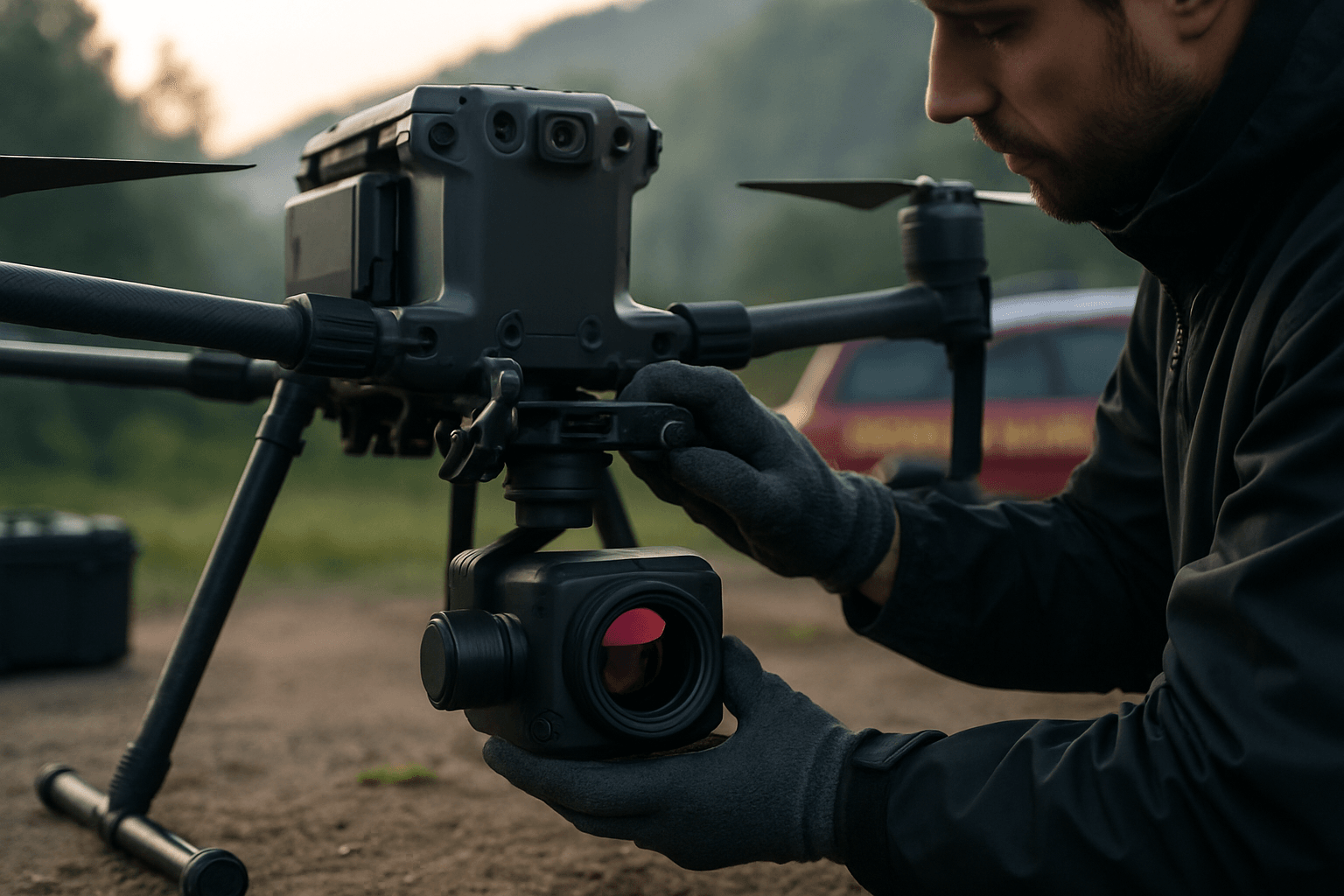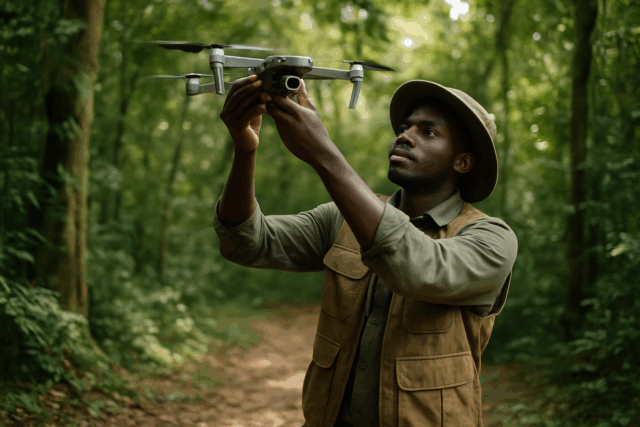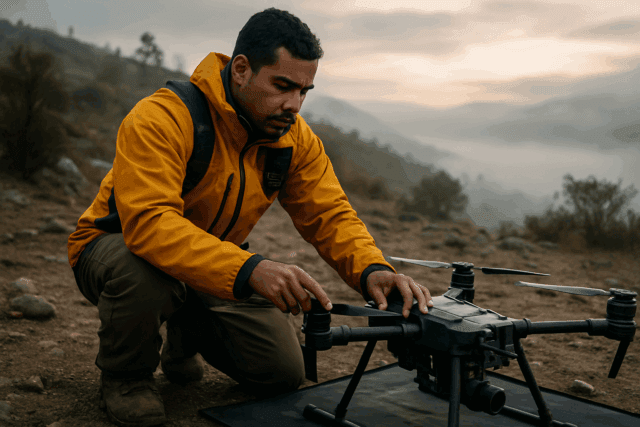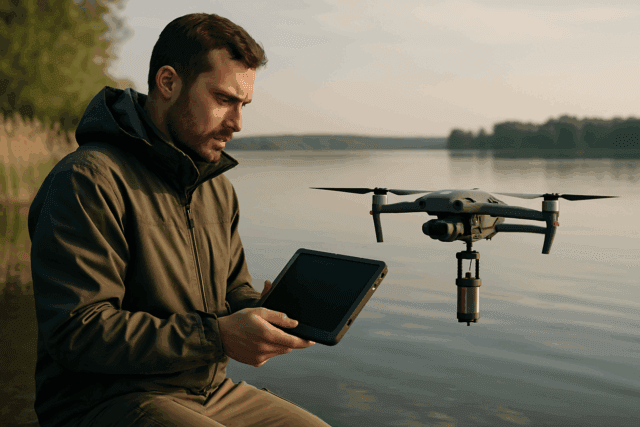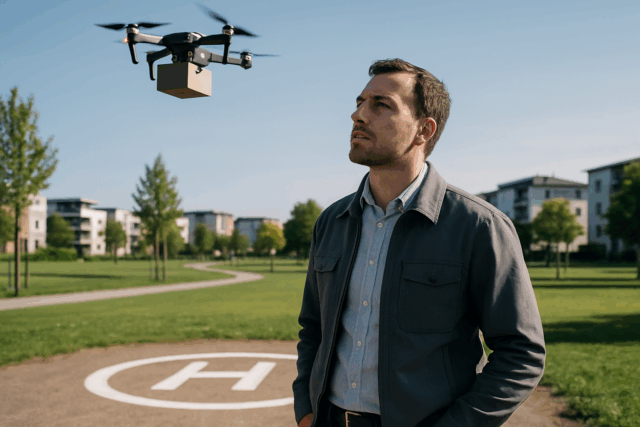The integration of Unmanned Aerial Systems (UAS), commonly known as drones, has revolutionized Search and Rescue (SAR) operations by offering unparalleled speed, efficiency, and access to challenging environments. A critical aspect of leveraging drone capabilities in SAR is the judicious selection of the appropriate payload. The right drone payload for SAR tasks can significantly enhance detection, communication, and delivery capabilities, directly impacting mission success and responder safety.
Understanding Drone Payloads in SAR
A drone payload refers to all the supplementary equipment a drone carries beyond its basic flight components, such as cameras, sensors, communication tools, or delivery items. These specialized tools extend the drone’s utility, transforming it into a versatile asset for various SAR scenarios. The effectiveness of a SAR drone is often directly proportional to its payload’s suitability for the specific mission and environmental conditions.
Key Drone Payload Types for SAR
Different SAR tasks necessitate distinct payload capabilities. The primary categories of drone payloads employed in search and rescue include:
Visual and Thermal Imaging Systems
Visual and thermal imaging are foundational payloads for SAR drones, providing critical intelligence in diverse conditions.
High-Resolution (RGB) Cameras
High-resolution or RGB cameras capture detailed visual data, offering a bird’s-eye view of the search area. These cameras are invaluable for:
- Initial Reconnaissance and Mapping: Quickly surveying large areas to identify landmarks, hazards, and potential search patterns.
- Daylight Victim Location: Spotting missing persons, vehicles, or significant debris in clear visibility.
- Damage Assessment: Providing clear imagery of disaster-stricken areas (e.g., collapsed buildings, flood zones) to assess structural integrity and aid rescue planning.
Thermal Imaging (Electro-Optical/Infrared – EO/IR) Cameras
Thermal imaging cameras detect infrared radiation (heat signatures) emitted by objects, converting it into an interpretable image. This capability is paramount in SAR, particularly in low-visibility or challenging conditions:
- Night Operations: Locating individuals in complete darkness by detecting their body heat.
- Obscured Visibility: Penetrating smoke, fog, or dense foliage to find heat sources that are invisible to the naked eye.
- Avalanche and Water Rescues: Detecting heat signatures beneath snowpacks or against the cooler water, significantly expediting location efforts.
- Structural Collapse: Identifying survivors trapped under rubble by sensing their heat.
- Wildfire Management: Spotting hidden hotspots and tracking fire progression for real-time situational awareness.
Advanced Sensing Payloads
Beyond standard visual and thermal, specialized sensors offer enhanced data collection for complex SAR environments.
LiDAR Systems
LiDAR (Light Detection and Ranging) systems use pulsed lasers to measure distances and create highly accurate 3D maps of terrain and structures. Their advantages in SAR include:
- Detailed Terrain Mapping: Generating high-resolution 3D maps, critical for planning rescue routes in complex landscapes like mountains or forests.
- Night and Low-Visibility Operations: Unlike traditional cameras, LiDAR does not rely on visible light, making it effective in complete darkness, smoke, or fog.
- Damage and Structural Assessment: Precisely evaluating structural damages in urban disaster zones, identifying unstable areas before ground teams enter.
Multispectral and Hyperspectral Cameras
These cameras capture data across numerous narrow bands of the electromagnetic spectrum, beyond what the human eye can perceive.
- Environmental Monitoring: Assessing plant health in disaster-affected areas or detecting subtle environmental changes.
- Smoke and Fog Penetration: Shortwave Infrared (SWIR) capabilities within some multispectral cameras can penetrate smoke and fog more effectively than visible light, aiding detection in challenging conditions like fires.
- Specialized Detection: Identifying specific materials or camouflage based on their unique spectral signatures.
Gas and Chemical Sensors
Equipping drones with gas or chemical sensors allows for remote detection of hazardous substances.
- Industrial Accidents: Monitoring chemical spill zones for airborne toxins and assessing environmental safety, minimizing exposure risk for rescue teams.
- Mining Accidents: Detecting hazardous gases like methane or carbon monoxide in collapsed tunnels.
- CBRNe Events: Identifying and monitoring chemical, biological, radiological, nuclear, and explosive threats without risking human responders.
Acoustic Sensors/Microphones
Acoustic sensors listen for specific sounds, providing a non-visual method of detection.
- Distress Signal Detection: Identifying human screams, calls for help, or distress beacons in areas where visual or thermal detection is difficult (e.g., dense forests, noisy environments, or under debris).
- Mobile Phone Pings: Some advanced acoustic systems, or integrated IMSI catchers/mobile phone detectors, can pinpoint the location of cellular devices even if not actively in use, within a few meters of accuracy.
Communication and Delivery Payloads
Beyond sensing, drones can play a direct role in aiding and communicating with individuals.
Communication Relays and Loudspeakers
These payloads facilitate two-way communication and information dissemination.
- Loudspeakers: Allow SAR teams to broadcast instructions to stranded individuals, guide survivors to safety, or provide reassurance in chaotic environments.
- Communication Relays: Extend radio contact in blackout zones, establishing vital communication links between rescue teams and those in distress.
Delivery and Payload Release Mechanisms
Drones equipped with these systems can transport and release essential supplies.
- Medical Supplies: Delivering first-aid kits, blood, vaccines, or medication to remote or inaccessible locations.
- Survival Gear: Dropping emergency food, water, radios, satellite phones, or life jackets to stranded individuals.
- Search Aids: Deploying strobe lights, flares, or personal locator beacons to assist ground teams in locating the target.
Spotlights and Illumination
High-powered lights, such as spotlights or strobes, enhance visibility during low-light operations.
- Nighttime Illumination: Illuminating search areas for improved visual assessment by ground teams or to guide subjects.
- Signaling: Using strobes to mark locations for other aircraft or ground personnel.
Factors Influencing Payload Selection
The decision-making process for selecting the appropriate drone payload involves considering several critical factors:
Nature of the SAR Task
The specific mission dictates the most suitable payload. Searching for a missing hiker in a dense forest will prioritize thermal and high-resolution cameras, while a structural collapse might require LiDAR and gas sensors.
Environmental Conditions
Day or night, weather (rain, fog, smoke), and terrain (urban, wilderness, mountainous, maritime) heavily influence payload choice. Thermal cameras excel in low visibility, and LiDAR is superior for 3D mapping in darkness.
Drone Platform Capabilities
The drone’s maximum payload capacity, flight time, and range are crucial. Heavier payloads typically reduce flight stability, maneuverability, and battery life, leading to shorter flight times. A drone with higher payload flexibility can carry multiple tools, reducing the need for multiple flights or drone types.
Real-Time Data and Communication Needs
SAR operations demand immediate data for decision-making. Payloads that offer real-time video feeds, data transmission, and seamless integration with command centers are essential.
Portability and Deployment Speed
In emergencies, rapid deployment is vital. Smaller, more easily transportable drones with quick-setup payloads are often preferred for initial response.
Budget and Cost-Effectiveness
While advanced payloads offer superior capabilities, their cost must be weighed against the available budget and the frequency of use for specific SAR tasks.
Regulatory Compliance
Operating drones for SAR, especially with advanced payloads or in beyond visual line of sight (BVLOS) operations, requires adherence to local and national aviation regulations.
Conclusion
The strategic selection of drone payloads is fundamental to maximizing the effectiveness of UAS in search and rescue missions. By carefully considering the specific SAR task, environmental conditions, and the technical capabilities of both the drone and its potential payloads, SAR teams can deploy these invaluable aerial assets with precision and efficiency. The ongoing advancements in drone technology and payload miniaturization continue to expand the horizons of SAR operations, enhancing the ability to locate and assist individuals in distress more rapidly and safely than ever before.

